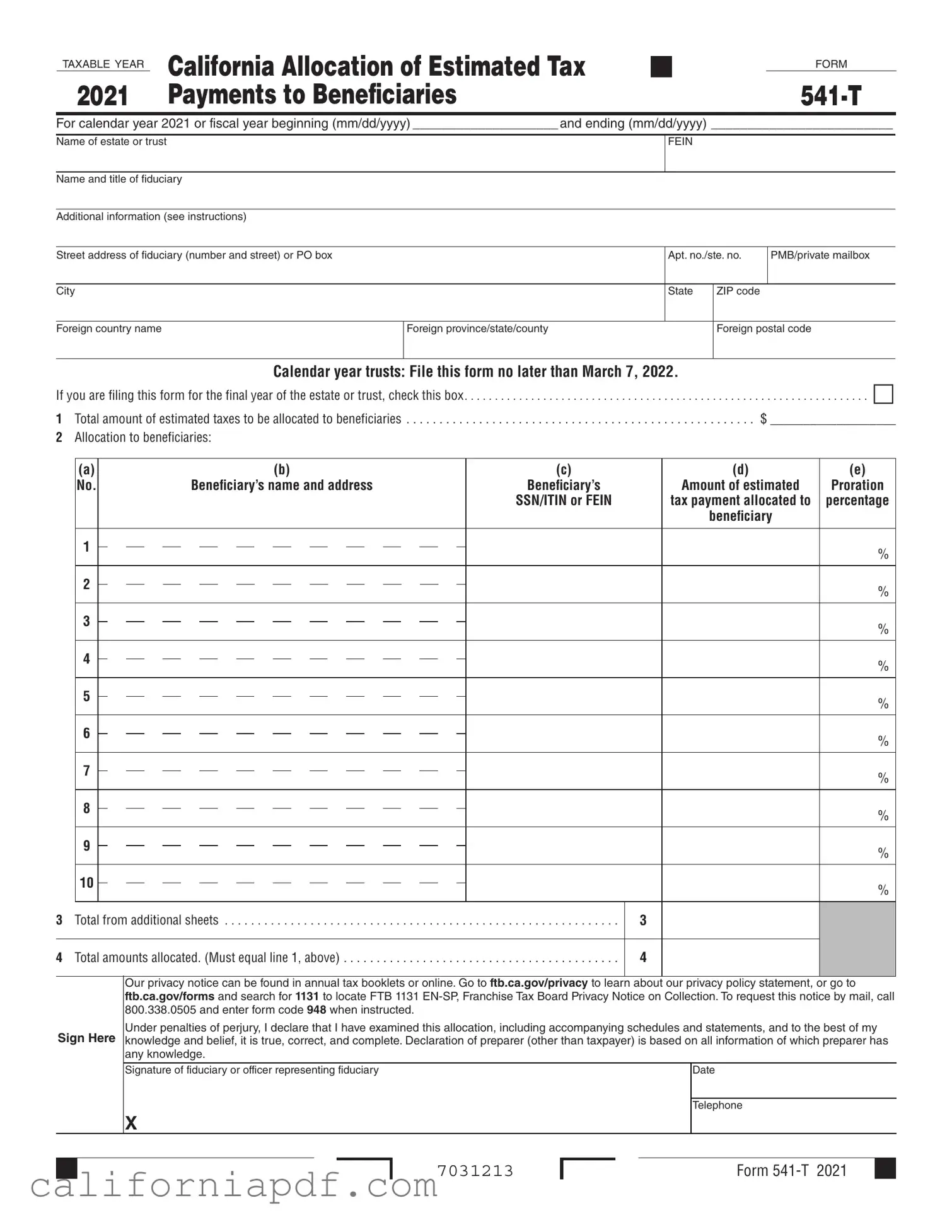The California Form 541-T, known as the Allocation of Estimated Tax Payments to Beneficiaries, is used by trusts or decedent’s estates in their final year to allocate portions of estimated tax payments to their beneficiaries. This election is made under Revenue and Taxation Code Section 17731, mirroring Internal Revenue Code Section 643(g)(1)(B), and is irrevocable once filed.
This form must be filed by fiduciaries of a trust or an estate that has decided to allocate estimated tax payments to one or more beneficiaries. It applies to estates in their concluding year and any year for trusts electing to make this allocation.
Form 541-T should be filed separately from Form 541, the California Fiduciary Income Tax Return. It should not be attached to Form 541, but mailed directly to the Franchise Tax Board at the specified address.
The form must be filed by the 65th day after the close of the trust or estate’s tax year. If this day falls on a weekend or legal holiday, the next business day becomes the due date. For example, for a calendar year trust or estate, the due date would be on or before March 6th of the following year.
On Line 1, fiduciaries are required to enter the total amount of the estimated tax payments made by the trust or estate that they wish to allocate to beneficiaries. This amount will be treated as if it were paid or credited to the beneficiaries on the last day of the tax year of the trust or estate.
The allocation to beneficiaries requires detailed information including beneficiary name, address, Social Security Number (SSN) or Federal Employer Identification Number (FEIN), the amount of estimated tax allocated, and the proration percentage. Beneficiaries must be listed in two categories: individuals with SSNs and other entities with FEINs. If allocating to more than 10 beneficiaries, additional sheets following the line 2 format must be attached.
What happens if you do not provide a valid SSN or FEIN for a beneficiary?
Failure to provide a valid SSN or FEIN for each beneficiary may result in processing delays and could potentially lead to penalties for the beneficiary. It is crucial to ensure that all beneficiary identifying numbers are accurate and properly recorded.
As of the latest information available, Form 541-T must be mailed to the Franchise Tax Board and is not eligible for electronic filing. It is important to verify the current filing options directly with the California Franchise Tax Board or through their website.
What should be done if the estate or trust has more than ten beneficiaries?
If there are more than ten beneficiaries, additional beneficiaries must be listed on a separate sheet following the format of Line 2. This sheet should include the fiduciary's name and FEIN for identification and ensure the total amount from this sheet is entered on Line 3 of the Form 541-T.
For detailed instructions and more information, fiduciaries can refer to the
-
California Franchise Tax Board's website at www.ftb.ca.gov
-
Specific instructions provided with Form 541-T
-
Consulting a tax professional specializing in estate and trust tax matters
. It's essential to keep updated with any changes or updates to the form or filing requirements that may occur.

